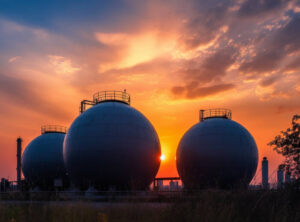Welcome to Extreme Investor Network, where we provide you with unique insights and expert analysis on the latest trends in the stock market, trading, and Wall Street. Today, we dive into the recent developments in the futures market, focusing on natural gas prices hitting a seven-week low.
Last week, U.S. natural gas futures plummeted nearly 11% to a nine-week low, driven by a combination of factors including increased output and abundant supply in storage. Despite projections for a spike in demand over the next two weeks, the contract saw its largest weekly loss since mid-February. This downward trend can be attributed to a major U.S. producer announcing a production boost, leading to a surge in output that outweighed any bullish weather conditions.
The rise in gas output in the Lower 48 U.S. states to an average of 102.1 Bcf/d in July, up from 100.2 Bcf/d in June, and 99.5 Bcf/d in May has contributed to the oversupply in the market. This increase follows a period of reduced drilling activities earlier in the year when prices hit 3-1/2-year lows.
According to data from the U.S. Energy Information Administration, utilities injected 32 Bcf of gas into storage for the week ending June 28, in line with analysts’ expectations. This contrasts with the increase of 76 Bcf in the same week last year and a five-year average rise of 69 Bcf for this period. The total gas in storage in the U.S. has reached 3,134 Bcf, approximately 19% above the normal level for this time of year.
Looking ahead, with hotter weather on the horizon, gas demand, including exports, is projected to climb to 106.8 Bcf/d from 105.9 Bcf/d this week, as reported by financial company LSEG. The Electric Reliability Council of Texas anticipates peak demand this week to approach the previous July record, fueled by a heatwave prompting increased use of air conditioning in homes and businesses.
In the European market, gas prices remained relatively stable, with a slight uptick in demand balanced by Norwegian gas flows. However, concerns surrounding future supplies have lent support to the market, adding an element of uncertainty to the overall picture.
Stay tuned to Extreme Investor Network for more in-depth analysis and expert insights on the latest market developments. Subscribe to our newsletter to receive exclusive content and stay ahead of the curve in the world of investing.

